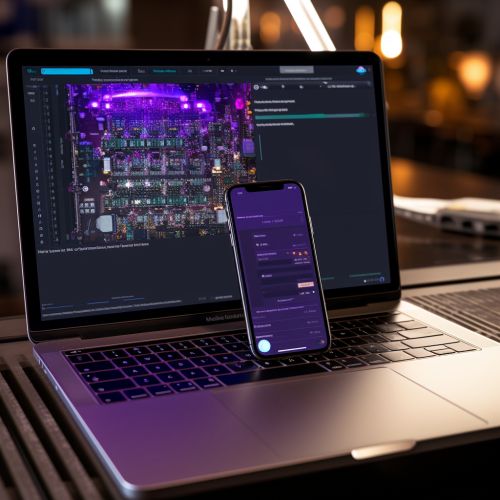Mobile Integrated Development Environment
Introduction
A Mobile Integrated Development Environment (IDE) is a software application that provides comprehensive facilities to computer programmers for software development on mobile devices. An IDE normally consists of a source code editor, build automation tools, and a debugger. Most modern IDEs have intelligent code completion features.
Overview
Mobile IDEs are designed to facilitate the process of developing software applications for mobile devices. They are typically optimized for the specific requirements and constraints of mobile development, such as limited processing power, memory, and screen size. They often include features such as code editing, debugging, and testing tools, as well as libraries and frameworks for building mobile applications.


Features of Mobile IDEs
Code Editing
The primary feature of any IDE, including mobile IDEs, is the code editor. This is where developers write and edit their source code. The code editor in a mobile IDE is typically optimized for the smaller screen size of mobile devices, with features such as syntax highlighting, code folding, and automatic indentation to make the code easier to read and write.
Debugging Tools
Debugging is an essential part of software development. Mobile IDEs typically include a variety of debugging tools to help developers find and fix errors in their code. These may include breakpoints, step-through execution, variable inspection, and call stack visualization.
Build Automation Tools
Build automation tools are used to automate common tasks in the software development process. In a mobile IDE, these tools may be used to compile the source code into a runnable application, package the application for distribution, or deploy the application to a device for testing.
Libraries and Frameworks
Mobile IDEs often include libraries and frameworks that developers can use to build their applications. These may include user interface components, data management tools, networking libraries, and more. By providing these resources, mobile IDEs can help developers build applications more quickly and easily.
Types of Mobile IDEs
There are many different types of mobile IDEs, each with their own strengths and weaknesses. Some are designed for specific platforms, while others are cross-platform. Some are standalone applications, while others are web-based. Here are a few examples:
Platform-Specific IDEs
Platform-specific IDEs are designed to develop applications for a specific mobile platform, such as Android or iOS. These IDEs typically provide the most comprehensive support for their respective platforms, including platform-specific libraries, tools, and emulators. Examples of platform-specific IDEs include Android Studio for Android development and Xcode for iOS development.
Cross-Platform IDEs
Cross-platform IDEs allow developers to write a single codebase that can run on multiple platforms. This can save time and effort compared to writing separate codebases for each platform. However, cross-platform IDEs may not provide as comprehensive support for platform-specific features as platform-specific IDEs. Examples of cross-platform IDEs include Xamarin, React Native, and Flutter.
Web-Based IDEs
Web-based IDEs run in a web browser, rather than as a standalone application. This can make them more accessible and easier to use, especially for beginners. However, they may not have as many features or as much performance as standalone IDEs. Examples of web-based IDEs include Cloud9 and Codeanywhere.
Advantages and Disadvantages of Mobile IDEs
Advantages
Mobile IDEs offer several advantages for mobile development. They are typically optimized for the specific requirements and constraints of mobile development, making it easier to write, test, and debug mobile applications. They often include libraries and frameworks for building mobile applications, saving developers time and effort. And they often include tools for deploying applications to devices for testing or distribution.
Disadvantages
However, mobile IDEs also have some disadvantages. They may not have as many features or as much performance as desktop IDEs. They may not provide as comprehensive support for platform-specific features as platform-specific IDEs. And they may require a constant internet connection, especially for web-based IDEs.
Conclusion
In conclusion, mobile IDEs are an essential tool for mobile development. They provide a range of features and tools to help developers write, test, and debug mobile applications, and they are typically optimized for the specific requirements and constraints of mobile development. However, they also have some disadvantages, and developers should carefully consider their needs and constraints before choosing a mobile IDE.
